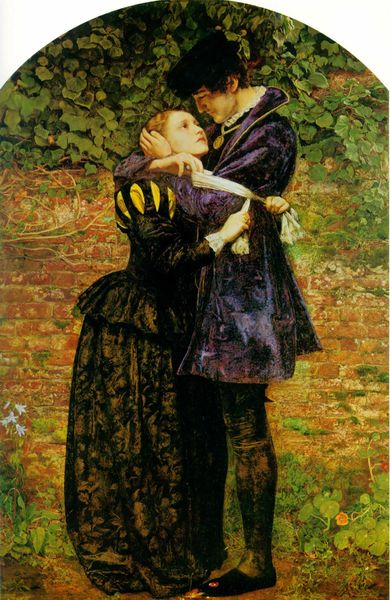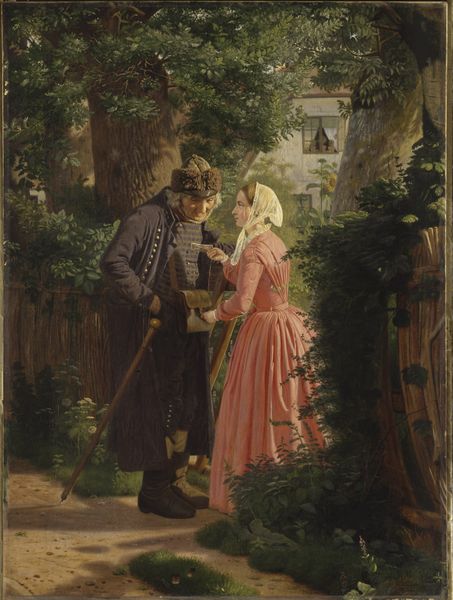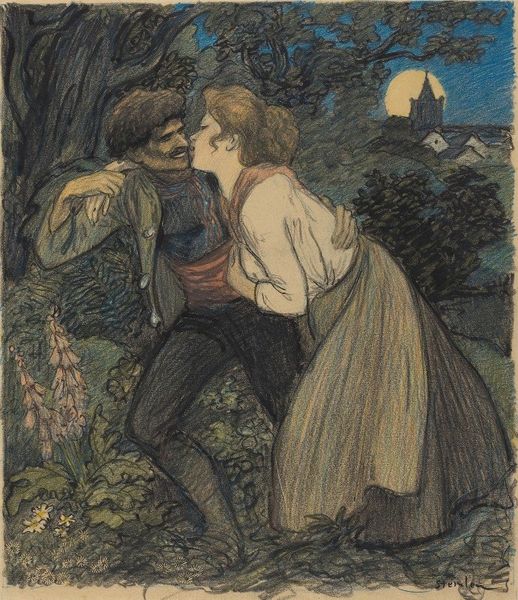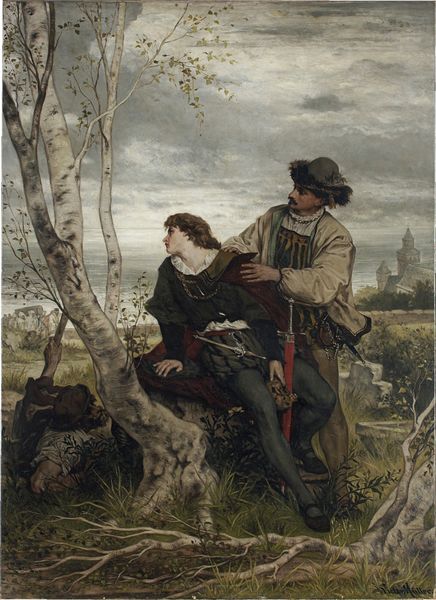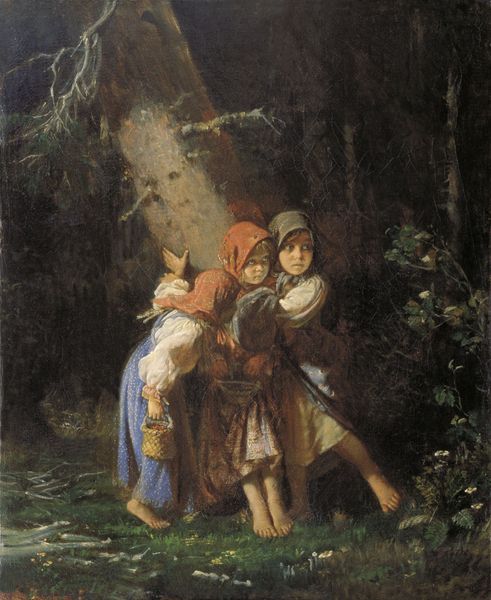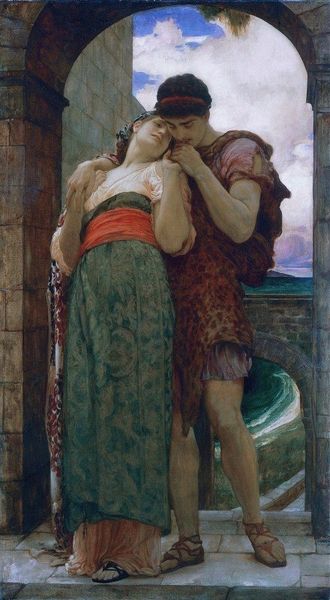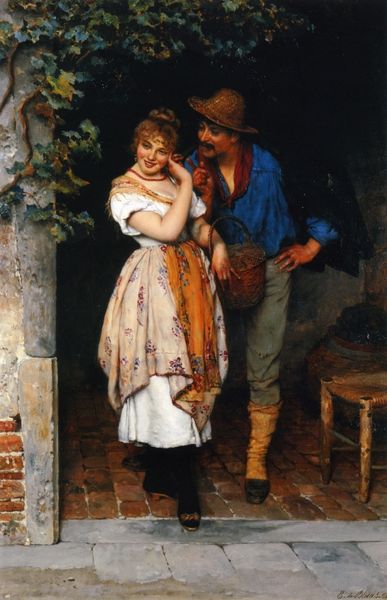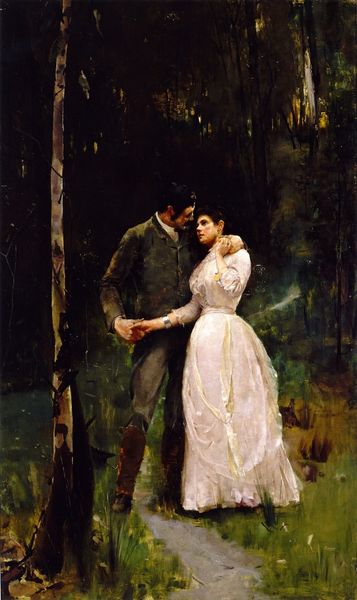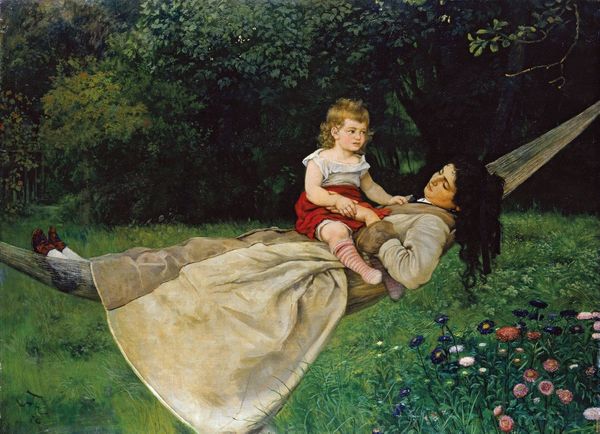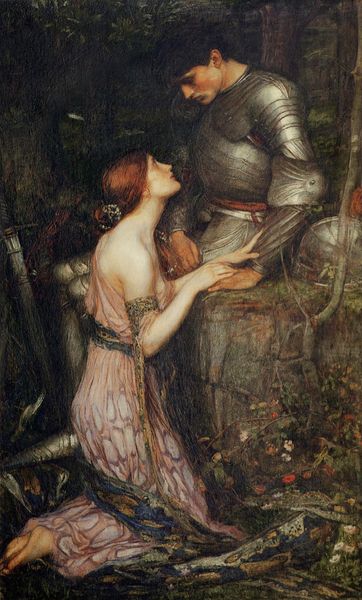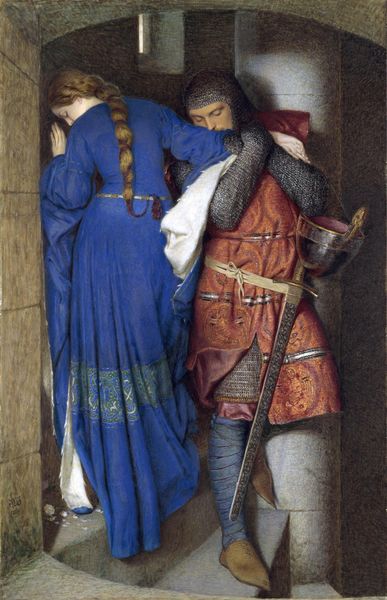
painting, oil-paint
#
portrait
#
gouache
#
narrative-art
#
painting
#
oil-paint
#
landscape
#
figuration
#
oil painting
#
romanticism
#
mixed media
Copyright: Public domain
Editor: Here we have "The Parting of Robert Burns and Highland Mary," an oil painting by James Archer. It’s a really sweet scene, almost theatrical in its staging. What catches your eye when you look at this? Curator: I immediately consider the materiality of this painting. Notice the contrasting textures: the coarse wool of the shawls, her simple linen blouse, and his tailored coat. What do these materials tell us about their social positions, their access to resources? Editor: So, you’re thinking about what their clothes are made of, as markers of class? Curator: Exactly. Archer uses the tangible properties of these textiles to depict a divide. Look closer – how would the rough feel of the shawls compare to her bare feet on the ground? It adds to the sense of a harsh, unforgiving world outside their embrace. Are we to assume she is from a lower social stratum than he is? Editor: It seems likely. The red skirt, a kind of uniform... How was Archer thinking about clothing's role in expressing someone's position within society? Curator: That's a great question! This was painted at a time when notions of Scottish identity and folklore were being commodified and sold. So the materials Archer depicts—the tartans, the simple fabrics—become potent symbols within a developing national and economic narrative. Are they props, so to speak? Consider the labor involved in producing these materials. How does that inform our understanding of the work? Editor: It's interesting to think about that in terms of labor. Suddenly it’s not just a pretty picture; it's connected to a whole system of making and selling. Thank you! Curator: And thank you for pushing me to consider Archer's strategic use of these signifiers within the context of the art market.
Comments
No comments
Be the first to comment and join the conversation on the ultimate creative platform.
